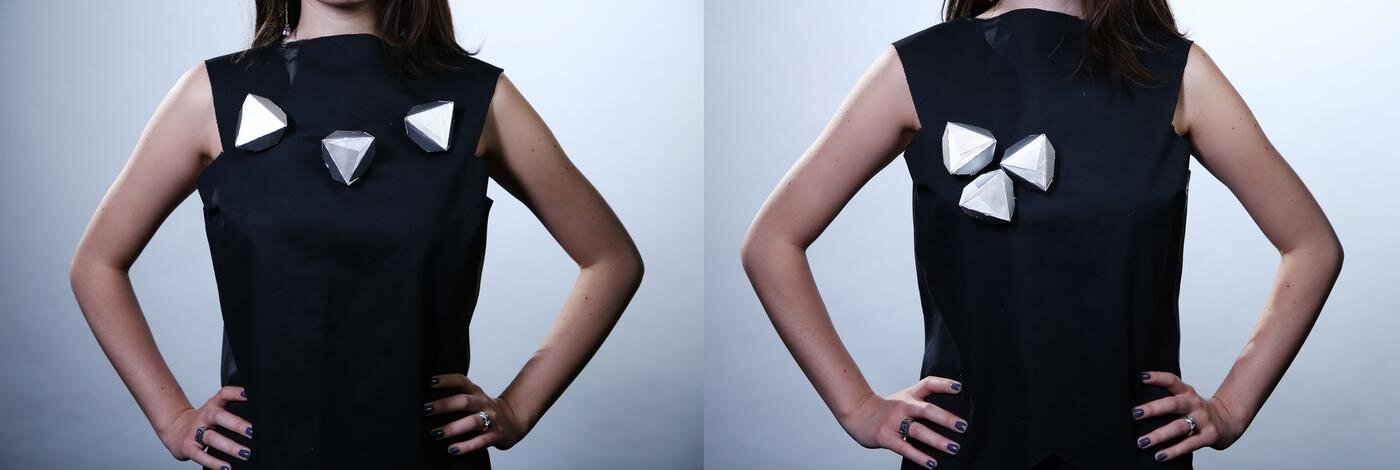In Collaboration with Cindy Hsin-Liu Kao, MIT Media Lab
This work explores a dynamic future in which the accessories we wear are no longer static, but are instead mobile, living objects on the body. Engineered with the functionality of miniaturized robotics, this "living" jewelry roams on unmodified clothing, changing location and reconfiguring appearance according to social context and enabling multiple presentations of self. With the addition of sensor devices, they can actively respond to environmental conditions. They can also be paired with existing mobile devices to become personalized on-body assistants to help complete tasks. Attached to garments, they generate shape-changing clothing and kinetic pattern designs—creating a new, dynamic fashion.
Example Applications
Etching patterns: When moving, the devices can etch into specific fabrics and "draw" patterns. On fabrics such as velvet, the robots leave visible tracks during movement - the clothing becomes a canvas to etch designs. The traces are temporary and therefore new patterns can be generated.
Shape-changing jewelry: Multiple devices can become building blocks to form jewelry design. With its mobility, the individual pieces can form various shapes and designs. We present an application of a jewelry set that transistions between a minimalistic brooch for going to work, and a necklace statement piece for going out.
Pattern Changing: Cover designs camouflaged with the underlying textile can morph between unique patterns effects. We present an example of a stripe pattern with matching device covers. By shifting its location on the body, the device creates different aesthetic effects.
Climate Reactive Clothing: The robots can trigger clothing to actively adapt based on the climate or comfort needs of the wearer. We created a coat and connected each drawstring of the hood to a device. Upon detecting an increase in temperature, the devices move downwards to unfold the hood.



